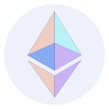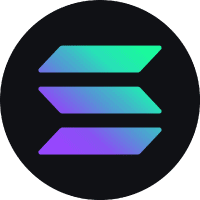Bitget:全球日交易量排名前 4!
BTC 市占率62.85%
Bitget 新幣上架: Blum
BTC/USDT$117911.31 (-1.25%)恐懼與貪婪指數70(貪婪)
山寨季指數:0(比特幣季)
比特幣現貨 ETF 總淨流量:+$297.4M(1 天);+$3.01B(7 天)。Bitget 新用戶立享 6,200 USDT 歡迎禮包!立即領取
到 Bitget App 隨時隨地輕鬆交易!立即下載
Bitget:全球日交易量排名前 4!
BTC 市占率62.85%
Bitget 新幣上架: Blum
BTC/USDT$117911.31 (-1.25%)恐懼與貪婪指數70(貪婪)
山寨季指數:0(比特幣季)
比特幣現貨 ETF 總淨流量:+$297.4M(1 天);+$3.01B(7 天)。Bitget 新用戶立享 6,200 USDT 歡迎禮包!立即領取
到 Bitget App 隨時隨地輕鬆交易!立即下載
Bitget:全球日交易量排名前 4!
BTC 市占率62.85%
Bitget 新幣上架: Blum
BTC/USDT$117911.31 (-1.25%)恐懼與貪婪指數70(貪婪)
山寨季指數:0(比特幣季)
比特幣現貨 ETF 總淨流量:+$297.4M(1 天);+$3.01B(7 天)。Bitget 新用戶立享 6,200 USDT 歡迎禮包!立即領取
到 Bitget App 隨時隨地輕鬆交易!立即下載


Unique One 價格RARE
TWD
未上架
$0.{7}3212TWD
+0.00%1D
截至今日 00:46(UTC),Unique One(RARE)的 價格為 $0.{7}3212 TWD。
RARE/TWD 匯率換算器
RARE
TWD
1 RARE = 0.{7}3212 TWD,目前 1 Unique One(RARE)兌換 TWD 的價格為 0.{7}3212。匯率即時更新,僅供參考。
在所有主流交易平台中,Bitget 提供最低的交易手續費。VIP 等級越高,費率越優惠。
Unique One價格走勢圖 (TWD/RARE)
最近更新時間 2025-07-16 00:46:01(UTC+0)
市值:--
完全稀釋市值:--
24 小時交易額:--
24 小時交易額/市值:0.00%
24 小時最高價:$0.{4}4359
24 小時最低價:$0.{8}4544
歷史最高價:$18.1
歷史最低價:$0.{8}4544
流通量:-- RARE
總發行量:
0RARE
流通率:0.00%
最大發行量:
10,000,000RARE
以 BTC 計價:0.0005936 BTC
以 ETH 計價:0.{10}1026 ETH
以 BTC 市值計價:
--
以 ETH 市值計價:
--
合約:
0x93df...3d9c7c8(Ethereum)
更多
今日Unique One即時價格TWD
今日 Unique One 即時價格為 $0.{7}3212 TWD,目前市值為 $0.00。過去 24 小時內,Unique One 價格漲幅為 0.00%,24 小時交易量為 $0.00。RARE/TWD(Unique One 兌換 TWD)兌換率即時更新。
1Unique One的價值是多少?
截至目前,Unique One(RARE)的 價格為 $0.{7}3212 TWD。您現在可以用 1 RARE 兌換 $0.{7}3212,或用 $ 10 兌換 311,355,515.5 RARE。在過去 24 小時內,RARE 兌換 TWD 的最高價格為 $0.{4}4359 TWD,RARE 兌換 TWD 的最低價格為 $0.{8}4544 TWD。
您認為今天 Unique One 價格會上漲還是下跌?
總票數:
上漲
0
下跌
0
投票數據每 24 小時更新一次。它反映了社群對 Unique One 的價格趨勢預測,不應被視為投資建議。
Unique One (RARE) 簡介
加密货币Unique One是数字资产类别中的一种新兴货币。它被设计成一种去中心化的数字货币,通过使用区块链技术,为用户提供安全、匿名和快速的交易方式。Unique One的创新之处在于它具备独特的功能和特点,使其在加密货币领域脱颖而出。
首先,Unique One具有去中心化的特点。与传统金融机构不同,Unique One的交易不需要任何中介,如银行或政府机构。这意味着用户可以直接进行交易,绕过了繁琐的中间人过程,并获得更快速和高效的交易体验。
其次,Unique One具有匿名性。在传统金融系统中,交易往往需要公开身份信息和敏感个人数据。而Unique One利用加密技术保护用户的隐私,使得交易过程中的个人信息得到有效保护,同时确保交易的安全性。
此外,Unique One还提供了全球范围内的便捷支付方式。通过使用Unique One,用户可以轻松实现跨境交易,无论身处何地。这为全球商业和跨国交易提供了更多的便利和机会,促进了经济全球化的发展。
Unique One还具备可编程性和智能合约的功能。这使得用户能够在区块链上自定义和部署各种智能合约,用于安全和透明的交易,无需第三方干预。这种灵活性和自主性有助于推动创新和发展,为用户带来更多的机会和可能性。
总的来说,Unique One作为一种加密货币,在去中心化、匿名性、全球支付和智能合约等方面具有独特的特点。它为用户提供了更安全、更灵活和便捷的交易方式,有望在数字经济时代发挥重要的作用。
Unique One 的 AI 分析報告
今日加密市場熱點查看報告
Unique One價格歷史(TWD)
過去一年,Unique One價格上漲了 -98.53%。在此期間,兌TWD 的最高價格為 $2.05,兌TWD 的最低價格為 $0.{8}4544。
時間漲跌幅(%) 最低價
最低價 最高價
最高價 
 最低價
最低價 最高價
最高價 
24h+0.00%$0.{8}4544$0.{4}4359
7d+0.00%$0.{8}4544$0.0002673
30d+0.00%$0.{8}4544$0.0002673
90d-85.30%$0.{8}4544$0.0002673
1y-98.53%$0.{8}4544$2.05
全部時間-99.98%$0.{8}4544(2025-05-13, 64 天前 )$18.1(2021-12-21, 3 年前 )
Unique One的最高價格是多少?
RARE兌換TWD的歷史最高價(ATH)為 $18.1,發生於 2021-12-21。相較於價格回撤了 Unique One。
Unique One的最低價格是多少?
RARE兌換TWD的歷史最低價(ATL)為 $0.{8}4544,發生於 2025-05-13。相較於RARE歷史最低價,目前RARE價格上漲了 Unique One。
Unique One價格預測
什麼時候是購買 RARE 的好時機? 我現在應該買入還是賣出 RARE?
在決定買入還是賣出 RARE 時,您必須先考慮自己的交易策略。長期交易者和短期交易者的交易活動也會有所不同。Bitget RARE 技術分析 可以提供您交易參考。
根據 RARE 4 小時技術分析,交易訊號為 賣出。
根據 RARE 1 日技術分析,交易訊號為 賣出。
根據 RARE 1 週技術分析,交易訊號為 賣出。
RARE 在 2026 的價格是多少?
根據RARE的歷史價格表現預測模型,預計RARE的價格將在 2026 達到 $0.0006914。
RARE 在 2031 的價格是多少?
2031,RARE的價格預計將上漲 +43.00%。 到 2031 底,預計RARE的價格將達到 $0.0009980,累計投資報酬率為 +3107185.71%。
熱門活動
常見問題
Unique One 的目前價格是多少?
Unique One 的即時價格為 $0(RARE/TWD),目前市值為 $0 TWD。由於加密貨幣市場全天候不間斷交易,Unique One 的價格經常波動。您可以在 Bitget 上查看 Unique One 的市場價格及其歷史數據。
Unique One 的 24 小時交易量是多少?
在最近 24 小時內,Unique One 的交易量為 $0.00。
Unique One 的歷史最高價是多少?
Unique One 的歷史最高價是 $18.1。這個歷史最高價是 Unique One 自推出以來的最高價。
我可以在 Bitget 上購買 Unique One 嗎?
可以,Unique One 目前在 Bitget 的中心化交易平台上可用。如需更詳細的說明,請查看我們很有幫助的 如何購買 unique-one 指南。
我可以透過投資 Unique One 獲得穩定的收入嗎?
當然,Bitget 推出了一個 機器人交易平台,其提供智能交易機器人,可以自動執行您的交易,幫您賺取收益。
我在哪裡能以最低的費用購買 Unique One?
Bitget提供行業領先的交易費用和市場深度,以確保交易者能够從投資中獲利。 您可通過 Bitget 交易所交易。
Unique One持幣
Unique One持幣分布矩陣
Unique One持幣分布集中度
巨鯨
投資者
散戶
Unique One地址持有時長分布
長期持幣者
游資
交易者
coinInfo.name(12)即時價格表

全球Unique One價格
目前Unique One用其他貨幣計價是多少?最近更新時間:2025-07-16 00:46:01(UTC+0)
RARE 兌換 MXN
Mexican Peso
Mex$0RARE 兌換 GTQGuatemalan Quetzal
Q0RARE 兌換 CLPChilean Peso
CLP$0RARE 兌換 HNLHonduran Lempira
L0RARE 兌換 UGXUgandan Shilling
Sh0RARE 兌換 ZARSouth African Rand
R0RARE 兌換 TNDTunisian Dinar
د.ت0RARE 兌換 IQDIraqi Dinar
ع.د0RARE 兌換 TWDNew Taiwan Dollar
NT$0RARE 兌換 RSDSerbian Dinar
дин.0RARE 兌換 DOPDominican Peso
RD$0RARE 兌換 MYRMalaysian Ringgit
RM0RARE 兌換 GELGeorgian Lari
₾0RARE 兌換 UYUUruguayan Peso
$0RARE 兌換 MADMoroccan Dirham
د.م.0RARE 兌換 AZNAzerbaijani Manat
₼0RARE 兌換 OMROmani Rial
ر.ع.0RARE 兌換 SEKSwedish Krona
kr0RARE 兌換 KESKenyan Shilling
Sh0RARE 兌換 UAHUkrainian Hryvnia
₴0- 1
- 2
- 3
- 4
- 5
相關加密貨幣價格
Worldcoin 價格(TWD)Ethereum 價格(TWD)OFFICIAL TRUMP 價格(TWD)XRP 價格(TWD)Stellar 價格(TWD)Solana 價格(TWD)WINkLink 價格(TWD)Litecoin 價格(TWD)Bitcoin 價格(TWD)Fartcoin 價格(TWD)Pi 價格(TWD)Toncoin 價格(TWD)Bonk 價格(TWD)Cardano 價格(TWD)Pepe 價格(TWD)Dogecoin 價格(TWD)Shiba Inu 價格(TWD)Terra 價格(TWD)Smooth Love Potion 價格(TWD)Kaspa 價格(TWD)
Bitget 平台新上架幣種的價格
新幣榜
購買其他幣種
在哪裡可以購買加密貨幣?
影片部分 - 快速認證、快速交易

如何在 Bitget 完成身分認證以防範詐騙
1. 登入您的 Bitget 帳戶。
2. 如果您是 Bitget 的新用戶,請觀看我們的教學,以了解如何建立帳戶。
3. 將滑鼠移到您的個人頭像上,點擊「未認證」,然後點擊「認證」。
4. 選擇您簽發的國家或地區和證件類型,然後根據指示進行操作。
5. 根據您的偏好,選擇「手機認證」或「電腦認證」。
6. 填寫您的詳細資訊,提交身分證影本,並拍攝一張自拍照。
7. 提交申請後,身分認證就完成了!
加密貨幣投資(包括透過 Bitget 線上購買 Unique One)具有市場風險。Bitget 為您提供購買 Unique One 的簡便方式,並且盡最大努力讓用戶充分了解我們在交易所提供的每種加密貨幣。但是,我們不對您購買 Unique One 可能產生的結果負責。此頁面和其包含的任何資訊均不代表對任何特定加密貨幣的背書認可,任何價格數據均採集自公開互聯網,不被視為來自Bitget的買賣要約。
RARE/TWD 匯率換算器
RARE
TWD
1 RARE = 0.{7}3212 TWD,目前 1 Unique One(RARE)兌換 TWD 的價格為 0.{7}3212。匯率即時更新,僅供參考。
在所有主流交易平台中,Bitget 提供最低的交易手續費。VIP 等級越高,費率越優惠。
Unique One評級
社群的平均評分
4.4
此內容僅供參考。
Bitget 觀點

SWAMI
9小時前
$ETH 🚀 Ethereum Pops Above $3K – Is a Bigger Move Brewing?
Daily Market Look – July 15, 2025
Ethereum is back in the spotlight! After breaking past the psychological $3,000 level, ETH touched $3,080 before cooling off slightly. But don’t let the red candle fool you — the bulls still have gas in the tank. 👀
🔍 Chart Watch: Key Levels to Know
🛡️ Support holding strong at $2,900–$2,940 — buyers have defended this level twice now.
💥 Major resistance sits near $3,100 — a clean breakout could unlock $3,500+.
🧭 A rare bullish crossover on the daily moving averages just printed — a classic trend reversal signal.
🔥 What’s Pushing ETH Higher?
💼 Institutional wave incoming: Over $1.6B in ETH has been scooped up by corporate treasuries — and ETF interest keeps rising.
🐳 Whales are rotating: With Bitcoin cooling off post-$120K breakout, big players are shifting capital into Ethereum.
📊 On-chain data looks healthy: ETH’s MVRV ratio suggests we’re nowhere near the market top yet.
🧠 Trade Ideas: How to Play the Move
🧭 Setup Type📌 Entry Zone🎯 Target Range❌ Invalidation AreaMomentum BreakoutBuy above $3,100$3,500–$3,600Below $2,940Buy-the-Dip ZoneAccumulate $2,900–$2,940Retest $3,100Stop under $2,880
💡 Pro Tip: Watch for volume surges — ETH needs strong confirmation above $3,100 to really ignite the next leg.
🌐 Altcoins on Deck
With Ethereum holding $3K, the rest of the altcoin market is waking up. Traders are eyeing ETHFI, OMNI, and ZETA as high-potential follow-ups if ETH dominance grows.
This could be the calm before a major altcoin storm — stay sharp.
📌 Final Take
Ethereum isn’t just surviving this market — it’s quietly leading it. Institutional demand, technical setups, and smart money rotation are all lining up.
If $3,100 gives way, ETH could rip toward $3,600 faster than most expect. Keep your charts open — and your risk managed. ✅
MOVE+2.44%
ETH-0.18%

liam 🦇🔊
10小時前
Everyone is turning bullish on ETH.
Normally I would say that I'm not surprised, but given the last 12-24 months on CT, I am blown away at just how rare "true" conviction is when it comes to people and crypto markets generally.
Most people on this app (including most crypto
ETH-0.18%
RARE+0.68%

banditxbt
11小時前
4/ Where do you get cards?
You can:
• Buy packs (dynamic ETH pricing)
• Trade on the in-game marketplace
• Use free-to-play drops with $fMON
Cards come in Common, Rare, Epic, and Legendary - with multipliers from 1x to 2.5x.
ETH-0.18%
RARE+0.68%

GeekEngine
12小時前
Unlocking Data Liquidity in Web3: Why $TAC Is More Than Just a Token It’s the Key to Composable Data Infrastructure
In the Web3 world, data is the new oil but unlike traditional systems, decentralized data must be transparent, verifiable, and composable. Chainbase is not just building another data platform; it's creating a modular ecosystem where data becomes an active asset developers can build with, and where $TAC serves as the gateway to this future.
Understanding Web3’s Data Problem
Blockchains offer transparency and security, but they were never designed for real-time querying or analytics. Developers often spend countless hours managing nodes, indexing data, and building custom infrastructure just to extract meaningful insights.
This inefficiency slows innovation, increases costs, and creates unnecessary barriers to building scalable applications.
Chainbase Solves This and $TAC Powers the Engine
Chainbase addresses these challenges head-on with a full suite of solutions: high-speed data indexing, real-time APIs, and composable developer tools. These services are seamlessly tied together by $TAC, the native token that underpins usage, incentives, and access control.
Here’s how $TAC fuels true data liquidity:
1. Micropayment-Based Data Access
Applications use $TAC to pay only for the data and bandwidth they consume. This enables a flexible and decentralized pricing model that supports developers of all sizes.
2. Incentivized Data Contributions
Contributors who maintain nodes, index datasets, or provide reliable data streams are rewarded in $TAC. This incentivizes quality, performance, and decentralization across the network.
3. Composable Data Marketplaces
$TAC will be used as the base currency within emerging data marketplaces, allowing developers to subscribe to or resell structured data streams through automated smart contracts.
Modular Infrastructure Enables Scalable Adoption
What makes Chainbase uniquely valuable is its modular design. Rather than forcing developers into a one-size-fits-all framework, Chainbase allows them to plug in specific services based on their needs whether building dashboards, DeFi platforms, AI tools, or cross-chain dApps.
This modularity, backed by $TAC, ensures the ecosystem is agile, scalable, and ready for diverse use cases across the evolving Web3 landscape.
Real-World Utility Drives Long-Term Token Value
$TAC's value proposition is deeply rooted in real-world application:
Increased data consumption drives higher token demand.
Growing developer adoption leads to greater ecosystem activity.
A rising number of live applications creates organic utility and sustainable token flow.
$TAC is not driven by speculation alone it is a functional asset that powers one of the most essential layers in decentralized infrastructure.
Key Takeaway for Developers and Investors
For developers: Accessing and integrating trustworthy, real-time blockchain data is no longer a luxury it's a necessity. $TAC gives you access to a robust and efficient data layer designed for Web3 scalability.
For investors: Infrastructure tokens with actual utility, long-term alignment, and scalable adoption curves are rare. $TAC stands out as one of the few with strong fundamentals and a clear vision for growth.
Conclusion
As Web3 applications mature and the demand for decentralized data intensifies, Chainbase is well-positioned to become a cornerstone of this evolution. And at the heart of it all lies $TAC not just a token, but a foundational building block in the next phase of blockchain innovation.
Understanding the role of $TAC today is an opportunity to be early and aligned with the future of decentralized data infrastructure.
RARE+0.68%
TAC+3.59%

JYP
12小時前
i’m back in the huddle 🐧
King’s Robe trait: 52/22,222, looks rare
glad to be able to pick this up 🫡
RARE+0.68%
LOOKS+1.20%
關於Unique One的更多資訊








